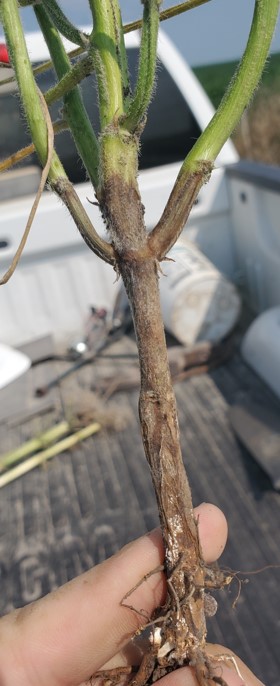July 23rd, 2021
posted
by Andrew Blomme on 7/22/2021
in
Weekly Newsletter

July 23rd, 2021
Dicamba Damage to Enlist Soybeans
Herbers Seed has sold Enlist soybeans for the past several years due to their high yield and effective weed control using the Enlist system. Over the past two years, off target movement of dicamba has damaged the majority of Enlist soybeans in the area to some degree. There are some misconceptions about source of this damage but Corteva released a statement last week to clarify exactly what is occurring. You can find the statement at the following link: Corteva Advisory Statement on Soybean Symptomology.
There is a comprehensive amount of industry and university data that disproves that leaf cupping is coming from sources other than nearby dicamba applications. It is not from the Enlist or Liberty herbicide applications. It is not from corn herbicide carryover from the previous year. All signs point back towards dicamba applications.
Enlist fields that have been damaged from off target dicamba movement have been observed since late May and continuing through this week. The picture below shows a field of Enlist soybeans that is cupped from dicamba. This picture was taken on Wednesday, July 21st. It's also important to note that by the label, Engenia and Xtendimax cannot be applied after June 30th. It is obvious that there have been off label applications of dicamba after this deadline.

It is hard to determine the amount of yield loss associated with this damage. Intuition leads us to think that dicamba damage to Enlist soybean is much more detrimental to yield now compared to damage we saw in late May and early June. Soybeans are currently in their reproductive stages and producing flowers and pods. Stresses, such as dicamba damage, will limit the proportion of flowers that will become pods and negatively impact yield.
The last misconception with Enlist soybeans is that they don't yield. At the end of the day, there is enough yield data out there to disprove this. Herbers Seed had soybeans plots with Enlist and Extend varieties side by side last year. Of the twenty entries (10 Enlist and 10 Extend) 4 of the top 5 highest yielding varieties were Enlist varieties. This year we have several more soybean plots with a mix of Enlist, Extend, and ExtendFlex varieties to compare yields between trait platforms. If you are interested in walking one of these plots with myself or Lou and comparing the different traits, we encourage you to contact us.
Disease and Insect Update
Updates on disease development and insect activity will be common on weekly newsletters through the end of the growing season. This week Phytopthora root rot was observed in soybean fields. Phytopthora damage is pictured below. It can be diagnosed by the brown lesions climbing up the stems of the plant. Soybean plants that are effected by Phytopthora typically show a lack of vigor compared to surrounding plants. This disease can be fatal depending on the degree of disease development.

Insects have been active this week. This week corn earworm eggs were found in corn fields. The picture below shows a cluster of earworm eggs. Eggs typically hatch 3-10 days after being laid. Larva will feed on corn silks and later kernels. As a rule of thumb, every 3 kernels lost on every ear across an acre results in a bushel lost. Corn earworm will be one of the pests we scout for as we approach R2-R3.

This week we also saw some trace aphid pressure. Aphids were primarily corn leaf aphids, shown below, and soybean aphids. Aphid levels are still very low. Aphids have several generations throughout the growing season and can reproduce very rapidly. Because of this, aphid numbers can rise very rapidly in the right conditions. We will continue to monitor this pest for several weeks.

Soybean gall midge larva continue to cause damage to soybean plants. The picture below shows the older, orange larva and younger, pale larva. The mix of older and younger larva mean that the period of larval feeding and damage will be extended, because as the older larva turn into flies and migrate out, younger larva will still be there to cause damage. Field edges are the best spots to scout for soybean gall midge damage.

Looking Forward
Soybean fields in our area will be approaching R4 over the next several days. R4, or "Full Pod" is considered the most critical period in a soybean plant's development for influencing yield. Corn fields in the area are in the middle of pollination. As plants approach R2, or blister stage, a shake test can be used to determine the percentage of kernels on the ear that got pollinated. Scouting over the next 7 days will be focused on evaluating corn pollination progress, watching disease development, and determining insect pressure. These topics and other observations will be covered in next week's newsletter.